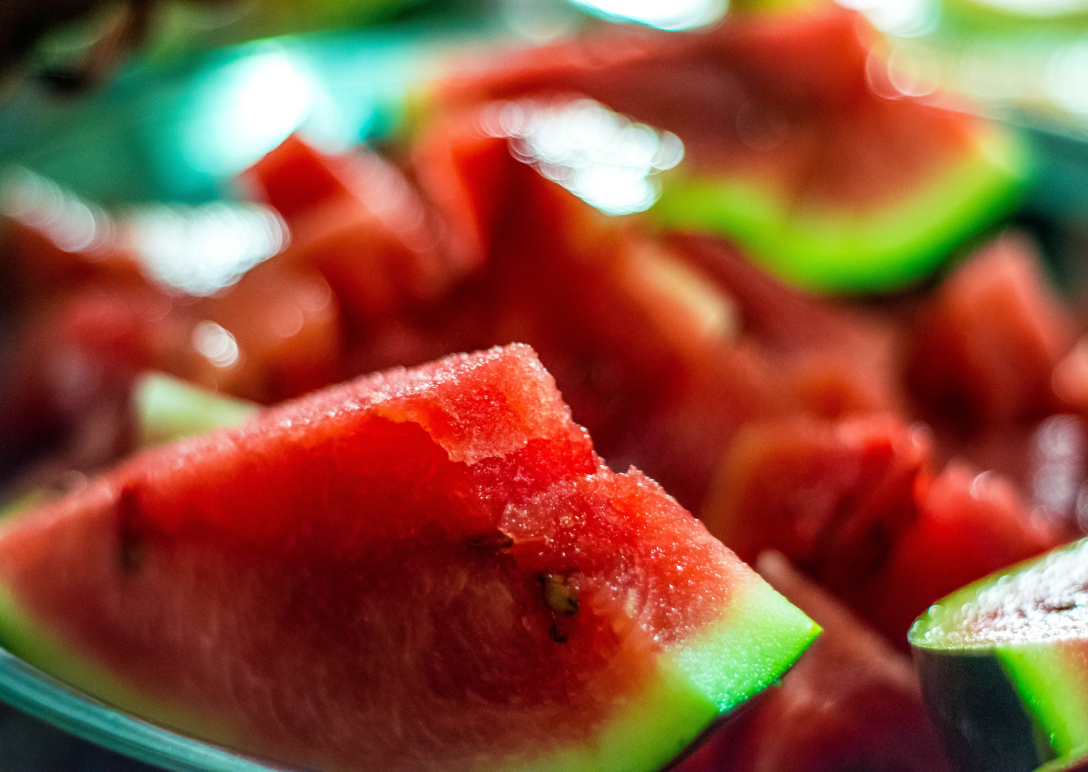Learning through delicious science!
Try this experiment to see the physics of energy conservation in action! This works especially well on a warm summer day.

OVERVIEW
How many rubber bands can you wrap around a watermelon before it bursts? Let’s find out! This is a simple experiment that shows how small forces can add up for big results!
Materials
- Rubber bands (you’ll need approximately 400 – 600)
- Watermelon
- Bowl or roll of tape
- Eye protection (e.g., goggles)
Note: this experiment should be performed outside and in a space where you’re not afraid to make a mess.
Instructions
- Place the watermelon upright on a sturdy surface. Depending on the size of watermelon, you can balance it on a roll of tape or in a medium-sized bowl.
- Place rubber bands around the center of the watermelon. You can place multiple at once or go one at a time. Either way, try to keep count!
- After approx. 300 rubber bands, you might notice your watermelon start to bend and warp in the center.
- By 400, your watermelon is probably beginning to leak or splinter. Keep going!
- When your watermelon starts to crack, be sure to have your eye protection ready and slow down your pace.
- By 500 rubber bands, your watermelon will begin to be slowly crushed until *POP*, your rubber bands rapidly snap together and break the melon in half!
How it Works
This experiment demonstrates the rules of the Conservation of Energy; that in a system, energy cannot be created or destroyed, only converted. When a rubber band is stretched, it is loaded with potential energy. That is energy that is not moving, but exists within the object. At first, this energy is being matched by the rind of the watermelon, so not much happens. However, when you add more bands, the potential energy builds and builds. Eventually, the structure of the rind can’t match the energy of the bands. This is when an energy conversion takes place; the potential energy becomes kinetic energy, the energy created when an object moves. All the potential energy you built up by stretching rubber bands slowly converts to kinetic energy, and the only place for that energy to go is to the watermelon. The rind will bend as the rubber bands constrict, until the watermelon breaks, and a burst of kinetic energy is released (with some energy spent on sound, heat, and friction)!

